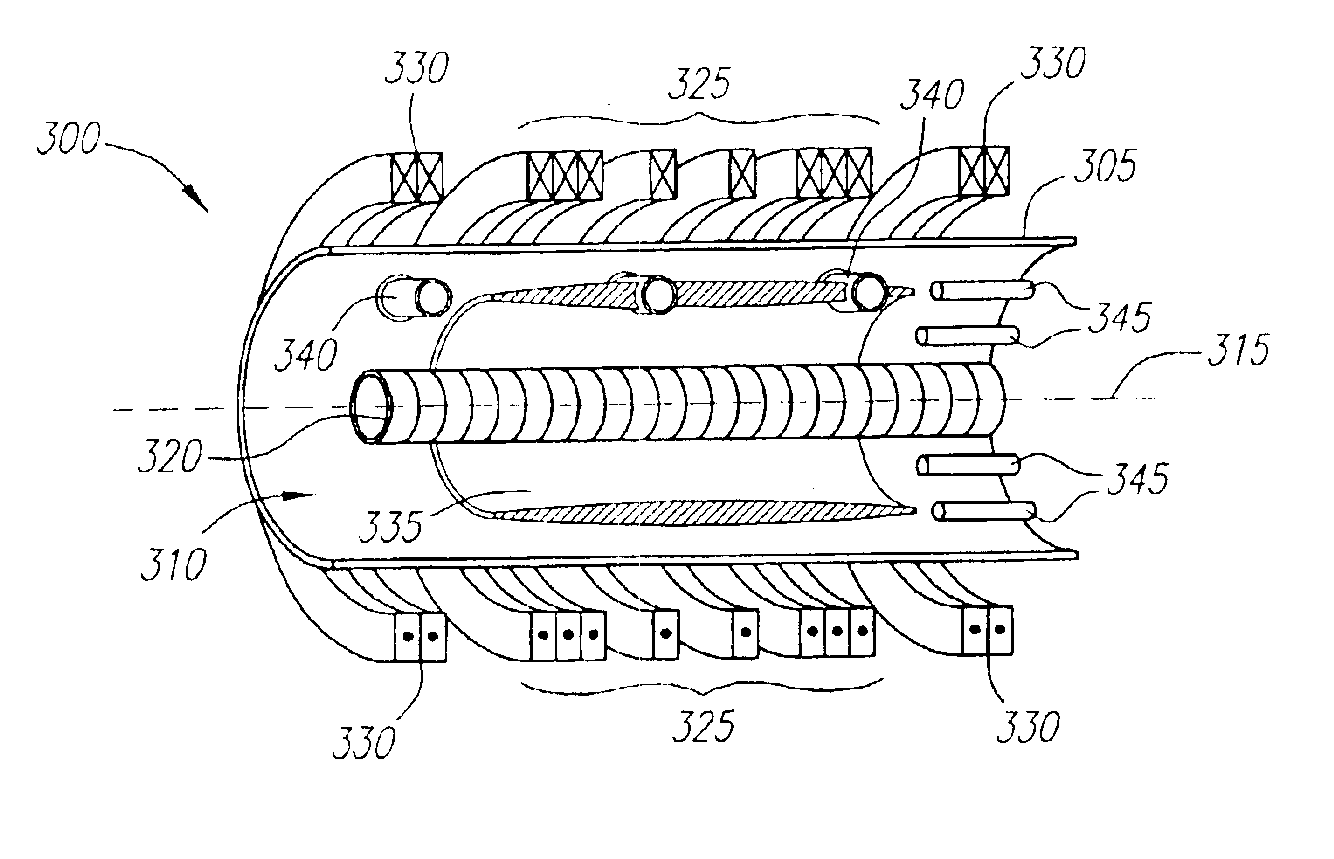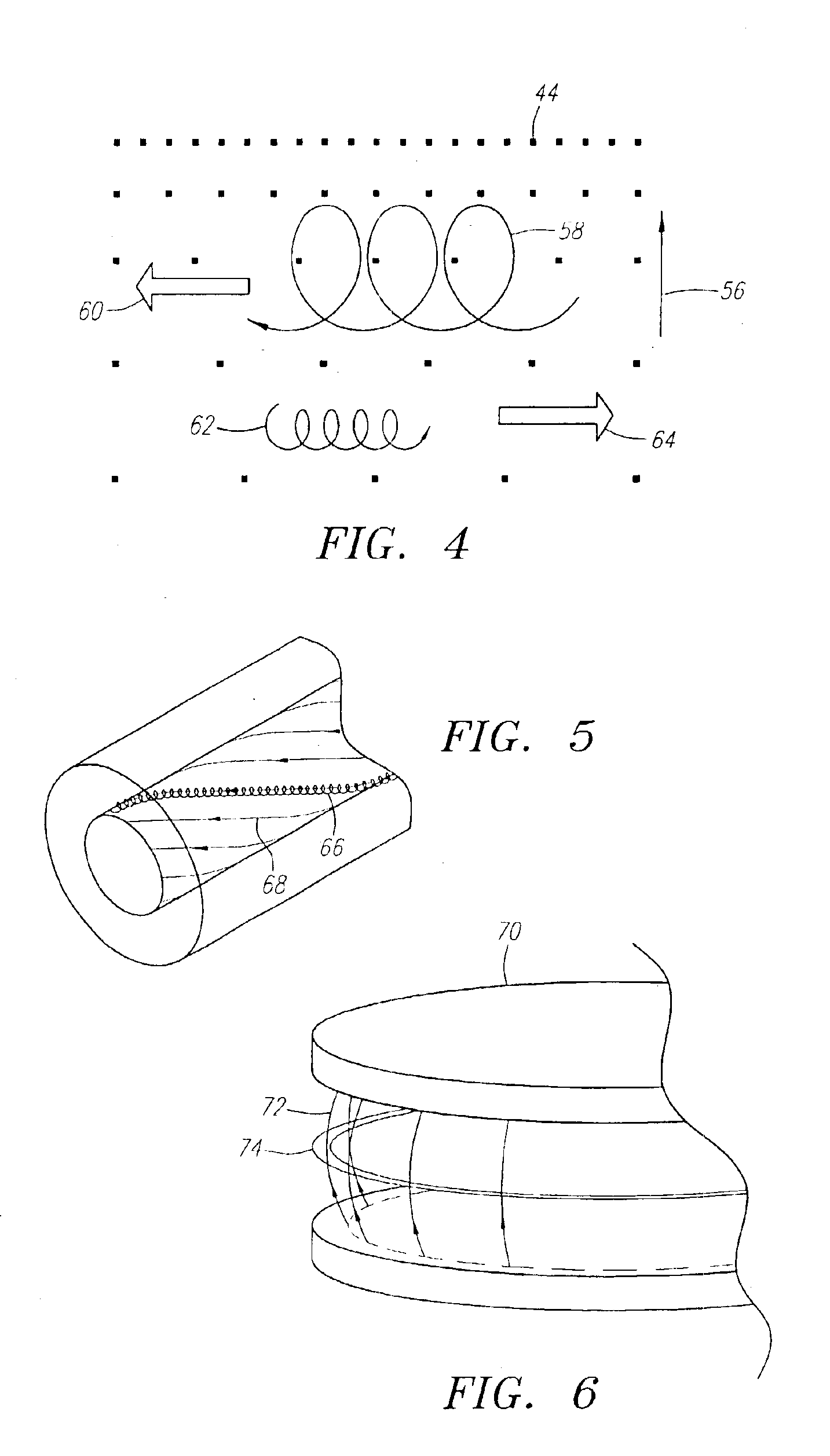Formation of a field reversed configuration for magnetic and electrostatic confinement of plasma
a field reverse configuration and plasma technology, applied in nuclear reactors, nuclear engineering, greenhouse gas reduction, etc., can solve the problems of low efficiency (less than 30%), high radioactivity, and structural damage to the reactor walls, and achieve the effect of facilitating classical containment of electrons and ions
- Summary
- Abstract
- Description
- Claims
- Application Information
AI Technical Summary
Benefits of technology
Problems solved by technology
Method used
Image
Examples
experiment 1
Propagating and Trapping of a Neutralized Beam in a Magnetic Containment Vessel to Create an FRC
[0187]Beam propagation and trapping were successfully demonstrated at the following parameter levels:
[0188]Vacuum chamber dimensions: about 1 m diameter, 1.5 m length.
[0189]Betatron coil radius of 10 cm.
[0190]Plasma beam orbit radius of 20 cm.
[0191]Mean kinetic energy of streaming beam plasma was measured to be about 100 eV, with a density of about 1013 cm−3, kinetic temperature on the order of 10 eV and a pulse-length of about 20 μs.
[0192]Mean magnetic field produced in the trapping volume was around 100 Gauss, with a ramp-up period of 150 μs. Source: Outer coils and betatron coils.
[0193]Neutralizing background plasma (substantially Hydrogen gas) was characterized by a mean density of about 1013 cm−3, kinetic temperature of less than 10 eV.
[0194]The beam was generated in a deflagration type plasma gun. The plasma beam source was neutral Hydrogen gas, which was injected through the back o...
experiment 2
FRC Formation Utilizing the Combined Beam / Betatron Formation Technique
[0198]FRC formation was successfully demonstrated utilizing the combined beam / betatron formation technique. The combined beam / betatron formation technique was performed experimentally in a chamber 1 m in diameter and 1.5 m in length using an externally applied magnetic field of up to 500 G, a magnetic field from the betatron flux coil 320 of up to 5 kG, and a vacuum of 1.2×10−5 torr. In the experiment, the background plasma had a density of 1013 cm−3 and the ion beam was a neutralized Hydrogen beam having a density of 1.2×1013 cm−3, a velocity of 2×107 cm / s, and a pulse length of around 20 μs (at half height). Field reversal was observed.
experiment 3
FRC Formation Utilizing the Betatron Formation Technique
[0199]FRC formation utilizing the betatron formation technique was successfully demonstrated at the following parameter levels:
[0200]Vacuum chamber dimensions: about 1 m diameter, 1.5 m length.
[0201]Betatron coil radius of 10 cm.
[0202]Plasma orbit radius of 20 cm.
[0203]Mean external magnetic field produced in the vacuum chamber was up to 100 Gauss, with a ramp-up period of 150 μs and a mirror ratio of 2 to 1. (Source: Outer coils and betatron coils).
[0204]The background plasma (substantially Hydrogen gas) was characterized by a mean density of about 1013 cm−3, kinetic temperature of less than 10 eV.
[0205]The lifetime of the configuration was limited by the total energy stored in the experiment and generally was around 30 μs.
[0206]The experiments proceeded by first injecting a background plasma layer by two sets of coaxial cable guns mounted in a circular fashion inside the chamber. Each collection of 8 guns was mounted on one o...
PUM
 Login to View More
Login to View More Abstract
Description
Claims
Application Information
 Login to View More
Login to View More - R&D
- Intellectual Property
- Life Sciences
- Materials
- Tech Scout
- Unparalleled Data Quality
- Higher Quality Content
- 60% Fewer Hallucinations
Browse by: Latest US Patents, China's latest patents, Technical Efficacy Thesaurus, Application Domain, Technology Topic, Popular Technical Reports.
© 2025 PatSnap. All rights reserved.Legal|Privacy policy|Modern Slavery Act Transparency Statement|Sitemap|About US| Contact US: help@patsnap.com



